Women Smart Watches
- Home
- Women Smart Watches
Trusted Manufacturer of Women’s Smartwatches
As a leading manufacturer of women’s smartwatches, we combine style and functionality. Offering customizable designs, advanced health tracking, and top-quality features, we help brands deliver innovative wearable tech.

A stylish blend of advanced AMOLED display and unique square design, perfect for modern women who value both functionality and fashion
- Bluetooth Calling
- 1.7 inch AMOLED
- 336×336 pixels, 1000nits
- 100+ Sport Modes
- 200+ Watch faces
- Heart Rate & SpO2 Sensor
- Blood Pressure Monitor
- IP68 Waterproof
- 210mAh Lithium battery
- APP - DaFit
Sleek and stylish with a vibrant AMOLED display, offering a perfect balance of elegance and advanced functionality for the modern user.
- Bluetooth Calling
- 1.45 inch AMOLED
- 466×466 pixels, 1000nits
- 100+ Sport Modes
- 200+ Watch faces
- Heart Rate & SpO2 Sensor
- Blood Pressure Monitor
- IP68 Waterproof
- 280mAh Lithium battery
- APP - GloryFit
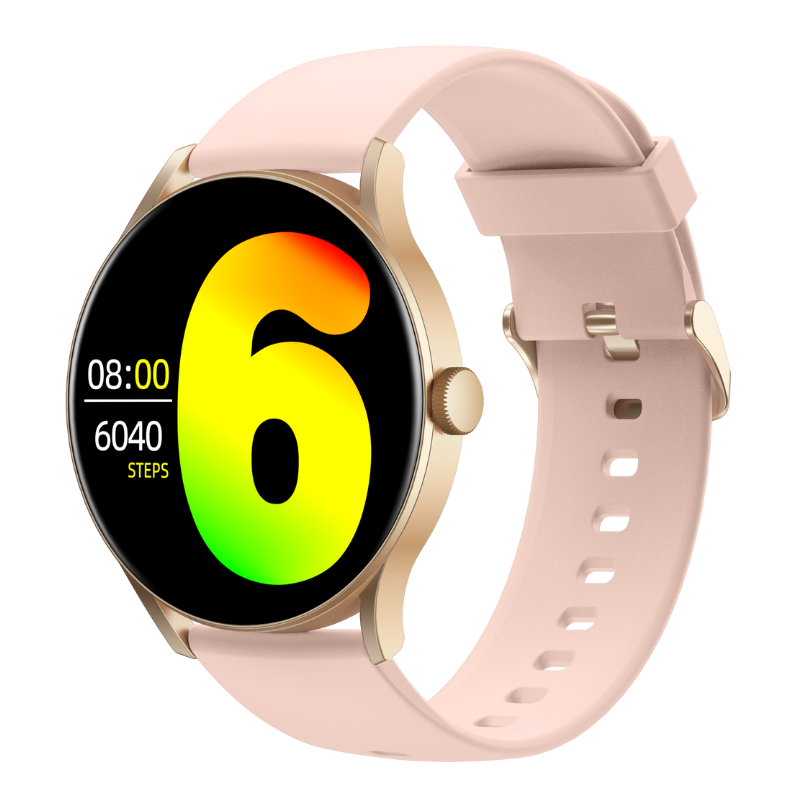
The Complete Buyer's Guide to Women's Smartwatches
Table of Contents

A stylish blend of advanced AMOLED display and unique square design, perfect for modern women who value both functionality and fashion
What Drives the Market Demand and Consumer Behavior for Women’s Smartwatches?
The market for women’s smartwatches has experienced significant growth, driven by an increasing demand for wearable technology that combines style, functionality, and health tracking. As more women embrace smartwatches for fitness, convenience, and fashion, understanding the key factors that shape their purchasing decisions has become crucial for manufacturers and retailers.
The target market for women’s smartwatches
The target market for women’s smartwatches is diverse, catering to various segments with distinct needs, preferences, and motivations. Below is an analysis of the main target markets for women’s smartwatches:
Health & Fitness Enthusiasts

Women aged 25-45 prioritize health and fitness, seeking smartwatches with heart rate monitoring, sleep tracking, step counting, and calorie tracking. They value accurate data, comfort, durability (waterproof, long battery life), and brand reputation for active lifestyles.
Professional Women

Professional women aged 30-50 value efficiency and convenience, seeking smartwatches with call functionality, notifications, schedule management, and office device control. Stylish designs, productivity-enhancing features, and reliable brand quality are key factors in their choices.
Fashion-Forward Consumers

Fashion-conscious women aged 18-35 prioritize aesthetics and personalization, seeking stylish smartwatches that complement their wardrobe. They value customizable designs, interchangeable straps, and unique materials. Design and brand image are top priorities, reflecting individuality and fashion.
Elderly women

Elderly women aged 60+ are adopting smartwatches for health and safety, prioritizing heart rate, blood pressure tracking, fall detection, and SOS alerts. They value simplicity, large displays, intuitive navigation, long battery life, and reliable emergency features for daily peace of mind.
Health & Fitness Enthusiasts

Women aged 25-45 prioritize health and fitness, seeking smartwatches with heart rate monitoring, sleep tracking, step counting, and calorie tracking. They value accurate data, comfort, durability (waterproof, long battery life), and brand reputation for active lifestyles.
Professional Women

Professional women aged 30-50 value efficiency and convenience, seeking smartwatches with call functionality, notifications, schedule management, and office device control. Stylish designs, productivity-enhancing features, and reliable brand quality are key factors in their choices.
Fashion-Forward Consumers

Fashion-conscious women aged 18-35 prioritize aesthetics and personalization, seeking stylish smartwatches that complement their wardrobe. They value customizable designs, interchangeable straps, and unique materials. Design and brand image are top priorities, reflecting individuality and fashion.
Elderly women

Elderly women aged 60+ are adopting smartwatches for health and safety, prioritizing heart rate, blood pressure tracking, fall detection, and SOS alerts. They value simplicity, large displays, intuitive navigation, long battery life, and reliable emergency features for daily peace of mind.
Tech Enthusiasts

Tech-savvy women aged 18-40 are early adopters, seeking smartwatches with AI assistants, AR, smart home control, and advanced features. They prioritize performance, innovation, ecosystem compatibility, and brand reputation for cutting-edge technology and quality.
Affluent Consumers

Affluent professional women value premium smartwatches that blend luxury, craftsmanship, and advanced health features. They seek elegant designs, brand prestige, superior functionality, and premium materials. After-sales service and exclusivity are key to enhancing their sophisticated lifestyle.
The market size for women's smartwatches
The target market for women’s smartwatches is diverse, catering to various segments with distinct needs, preferences, and motivations. Below is an analysis of the main target markets for women’s smartwatches:

Global Market Overview
According to market research reports, the global smartwatch market is expected to grow steadily, with the women’s smartwatch segment showing strong growth. The market size depends on various factors such as economic development in different regions, consumer demand for health and fitness features, and the growing adoption of wearable technology.
Projected Growth: According to the Global Smartwatch Market Report (2023-2028), the smartwatch market is expected to grow at an average annual rate of around 20%. This growth is positively impacting the women’s smartwatch market.
Market Share: The share of women’s smartwatches in the global smartwatch market has been steadily increasing, with more brands focusing on designing products specifically for women. Although men still dominate the smartwatch market, the female segment is growing quickly, especially in health, fashion, and premium product categories.
Regional Markets
North American Market: The demand for women’s smartwatches in North America, particularly in the U.S., is increasing. Women in the U.S. have a high level of health consciousness and a strong acceptance of technology, driving the demand for smartwatches. As more women become interested in wearable devices, the market is expected to continue growing.
European Market: The demand for women’s smartwatches is also on the rise in Western and Northern Europe. European women are particularly interested in health management, eco-friendly products, and personalized designs, which are driving growth in the women’s smartwatch market.
Asian Market: The potential for the women’s smartwatch market in Asia, particularly in countries like China, Japan, and India, is vast. With the increasing adoption of wearable technology and a growing interest in health monitoring, fitness tracking, and stylish design, demand for women’s smartwatches is rapidly growing in Asia. China, in particular, is experiencing a surge in demand for wearables among women as they become more health-conscious.
Latin America and Middle East: The markets for women’s smartwatches in Latin America and the Middle East are relatively new but growing as the wearable tech market matures. Women in these regions are primarily drawn to stylish designs and health-monitoring features in smartwatches, leading to a rise in demand for female-targeted wearable devices.


Market Segmentation
Health and Fitness: Health-conscious women are seeking smartwatches that track health metrics such as heart rate, steps, sleep patterns, and calories burned. This market is growing rapidly, especially among fitness enthusiasts, young professionals, and older women focused on health monitoring.
Fashion and Personalization: Fashion-forward women desire smartwatches that blend technology with style. These consumers prioritize customizable designs, interchangeable straps, and unique colors. This segment is especially strong among younger women who are seeking smartwatches that complement their personal fashion.
Premium and Luxury Market: Affluent women, typically aged 30-50, are interested in high-end smartwatches that combine advanced features with luxury design. As luxury brands like Apple and Samsung introduce exclusive female-oriented designs, this segment’s market size is steadily increasing.
Market Drivers
Rising Health Awareness: With an increasing focus on health and wellness, women are seeking wearable devices that help monitor fitness and overall well-being, thus boosting demand for smartwatches with health-tracking features.
Smart Technology Adoption: As smart technology and connectivity become more widespread, women are increasingly choosing smartwatches that offer a wide range of features, from fitness tracking to notifications, GPS, and payment capabilities.
Fashion and Lifestyle: Smartwatches are becoming not just a tech accessory but also a fashion statement for many women. This trend is particularly strong among younger consumers who value stylish, customizable, and trendy designs.
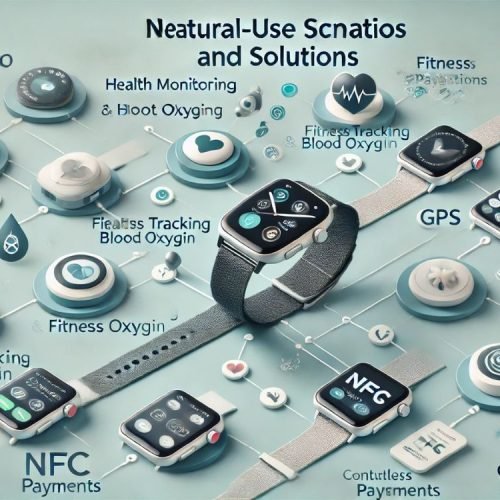

Market Size Forecast
According to industry data, the global smartwatch market is expected to exceed $40 billion by 2028, with women’s smartwatches accounting for a significant portion of this total. As products become more feature-rich and designs become more tailored to women’s preferences, the market size for women’s smartwatches is projected to grow steadily in the coming years.
Consumer Preferences for Women’s Smartwatches
Understanding consumer preferences for women’s smartwatches is essential for meeting market demands and tailoring products effectively.
Health and Fitness Tracking
Women prioritize health-related features such as heart rate monitoring, sleep tracking, menstrual cycle tracking, stress management, and calorie counting.
Connectivity Features
Women value seamless connectivity with their smartphones for call notifications, message alerts, calendar synchronization, and social media updates.
Convenience Functions
Smartwatches with voice assistants, GPS tracking, contactless payment, and smart home integration are increasingly popular, especially among busy professionals
Stylish & Feminine
Women prefer smartwatches with elegant, sleek designs that complement their outfits & lifestyle. Compact sizes, slim profiles, softer color options
Customizability
The ability to change straps, personalize watch faces, choose from multiple color options. They like to align smartwatch with their fashion style
Material Choices
Premium materials such as leather, stainless steel, and durable yet lightweight options are preferred for a blend of comfort and style.
Ease of Use
Women prefer intuitive interfaces, user-friendly apps, and simplified navigation. Clear displays and accessible buttons or touchscreens are essential
Battery Life
Long battery life is a top priority, as frequent charging can be inconvenient. Smartwatches with a battery life of multiple days are highly desirable.
Comfortable
Comfort is key, especially for women who wear their smartwatches throughout the day or during workouts. Lightweight designs with ergonomic straps are preferred
Brand Reputation
Consumers lean towards trusted brands known for quality and innovation, such as Apple, Samsung, Garmin, and Fitbit. Emerging brands that offer competitive pricing and unique features also capture interest
Value for Money
Women look for a balance between functionality, design, affordability. While some prefer premium smartwatches for their brand and features, others seek affordable options that don’t compromise on quality
Sustainability
Eco-conscious consumers value brands that use sustainable materials, ethical production processes, and environmentally friendly packaging
Demand Differences for Women’s Smartwatches Across Markets
Top 10 Most Popular Smart Watches for Women
The women’s smartwatch market is highly dynamic, characterized by intense competition among global technology giants, fashion-forward brands, and emerging players. Here’s an analysis of the competitive landscape:

Apple
Apple Watch dominates the global smartwatch market, offering advanced features like fitness tracking, health monitoring (e.g., ECG, blood oxygen), and seamless integration with iOS. Apple’s stylish designs, customizable straps, and premium branding make it a top choice for women seeking functionality and fashion.
Samsung
Samsung’s Galaxy Watch series is a strong contender, known for its AMOLED displays, robust health features, and compatibility with both Android and iOS devices. The brand appeals to women with its elegant designs and versatile functionalities.
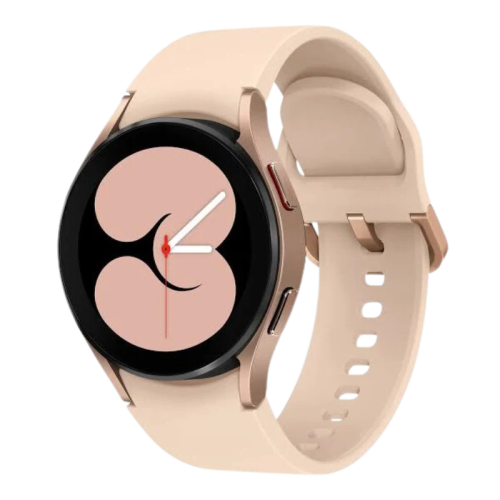

Fitbit
Renowned for its focus on health and fitness, Fitbit caters to women who prioritize wellness. Features like menstrual cycle tracking, stress management, and affordability make it a popular option for fitness enthusiasts.
Garmin
Garmin targets fitness and outdoor enthusiasts with durable smartwatches offering advanced sports tracking and GPS features. Their refined designs and specialized functionalities appeal to active women
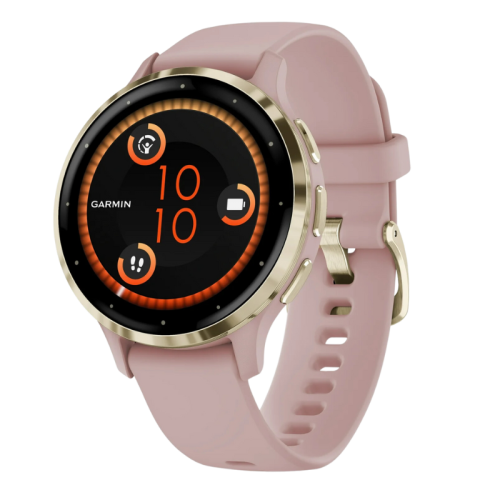

Fossil
Fossil and its subsidiaries (e.g., Michael Kors, Skagen) combine smartwatch technology with high-end fashion. These brands focus on design-conscious women, offering customizable looks with moderate tech features
HUAWEI
These Chinese brands provide affordable, stylish smartwatches with essential health and fitness features, making them highly competitive in price-sensitive markets.

xiaomi
Lorem ipsum dolor sit amet, consectetur adipiscing elit. Ut elit tellus, luctus nec ullamcorper mattis, pulvinar dapibus leo.
AMAZFIT
Lorem ipsum dolor sit amet, consectetur adipiscing elit. Ut elit tellus, luctus nec ullamcorper mattis, pulvinar dapibus leo.


HOAIYO
Lorem ipsum dolor sit amet, consectetur adipiscing elit. Ut elit tellus, luctus nec ullamcorper mattis, pulvinar dapibus leo.
VIMISMART
Lorem ipsum dolor sit amet, consectetur adipiscing elit. Ut elit tellus, luctus nec ullamcorper mattis, pulvinar dapibus leo.

What Are the Key Design and Functional Features of Women’s Smartwatches?
Top 6 Unique Design Features of Women’s Smartwatches
Women’s smartwatches are designed with a unique blend of style, functionality, and comfort to meet the specific preferences and needs of female consumers. Here are the key distinctive design features

Fashion & Aesthetics
Women’s watch feature slim designs with 1.2–1.7" faces, ideal for smaller wrists. Popular in rose gold, pink, and silver, they use premium materials like stainless steel, leather, and soft silicone for style and comfort.
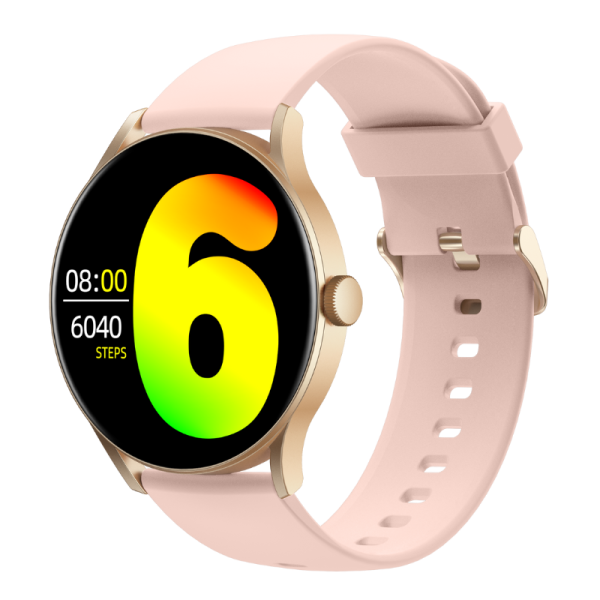
Customizability
It feature interchangeable straps in leather, metal, or silicone, offering versatility for any occasion. Customizable digital & analog watch faces allow users to personalize designs to suit their unique style.

Compact & Lightweight
It feature lightweight, slim designs for all-day comfort. Compact sizes fit smaller wrists perfectly, offering ease of use for both daily activities and sports, ensuring style and functionality throughout the day.

Female-Centric Details
Women’s smartwatches feature optimized strap lengths, dial sizes, and button placements for comfort. Smooth curves and streamlined shapes enhance elegance, offering a refined, feminine aesthetic.

Functionality & Style
Ladies watch integrate advanced features discreetly into sleek designs. Jewelry-inspired details, like crystal accents and pearl-like straps, make them both high-tech devices and fashionable accessories.

Versatile Elegance
Women’s smartwatches combine high-tech features with stylish design. Simplified buttons and sleek displays suit formal, casual, or athletic settings, making them ideal for work, workouts, or nights out.
How Do the Features of Women’s Smartwatches Differ from Men’s?
Women’s smartwatches differ from men’s in several key areas, with features and designs tailored to meet the unique needs of female users. Below are the main differences in functionality and design:

Personalized Health Tracking
Menstrual Cycle Tracking, Pregnancy Health Management, Stress and Emotion Management

Aesthetic and Design
Smaller Watch Faces, Variety of Colors and Materials, Customization Options,Interchangeable straps

Feature Focus
Beauty-Related Functions, Optimized Fitness Modes, Lightweight Functionality

User Interface & Experience
User-Friendly Interfaces, Enhanced Notifications like hydration reminders, inactivity alerts .

Market Positioning
Blend of Fashion and Utility, Multi-Scenario Usability Designed to suit different occasions
What Are the Common Health Monitoring Features in Women’s Smartwatches?
Women’s smartwatches offer a range of health monitoring features designed to cater to their specific needs. Here are some of the most common ones:

Menstrual Cycle Tracking
– Allows users to log and monitor their menstrual cycles.
– Provides insights into ovulation periods, fertile windows, and hormonal changes.
– Offers reminders and personalized health tips.
Stress and Emotion Monitoring
– Tracks stress levels using heart rate variability data.
– Offers relaxation techniques, guided breathing exercises, and stress-reduction tips.
– Helps women manage daily stress effectively.


Heart Rate Monitoring
– Monitors heart rate continuously throughout the day.
– Alerts users about irregularities such as unusually high or low heart rates.
– Provides data to support overall cardiovascular health.
Sleep Tracking
– Tracks sleep duration and quality, including deep sleep, light sleep, and REM phases.
– Offers insights to improve sleep patterns and quality.
– Provides bedtime reminders and relaxation tools.
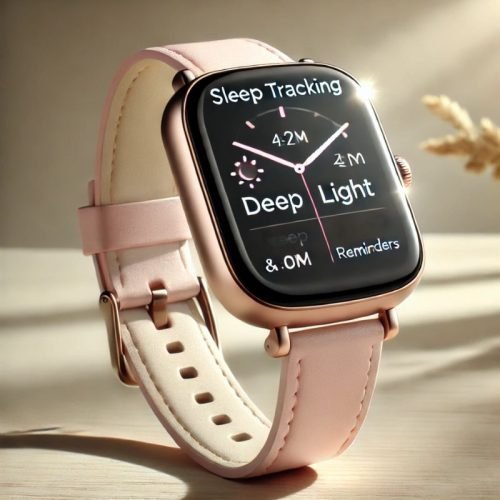

Blood Oxygen Monitoring (SpO2)
– Measures blood oxygen levels to ensure adequate oxygen supply.
– Useful for tracking fitness recovery and overall respiratory health.
Blood Pressure Monitoring
Blood pressure monitoring in women’s smartwatches provides real-time measurements, helping users track and manage their cardiovascular health. This feature supports early detection of irregularities and promotes overall wellness.

Pregnancy Health Management
– Tracks pregnancy-related metrics, such as heart rate changes and physical activity levels.
– Offers reminders and advice for wellness during pregnancy.
– Provides fetal heart rate monitoring in select models.
Fitness and Activity Tracking
– Tracks steps, calories burned, distance traveled, and workout intensity.
– Offers modes for yoga, Pilates, dance, and other female-preferred fitness activities.
– Encourages users to maintain an active lifestyle with reminders and goal-setting features.


Body Temperature Monitoring
– Monitors skin temperature to detect variations that may indicate health concerns.
– Useful for tracking ovulation or early signs of illness.
Hydration and Nutrition Reminders
– Reminds users to drink water regularly throughout the day.
– Offers tips on maintaining a balanced diet and staying hydrated.

How Can Advanced Technology and Performance Features Benefit Your B2B Smartwatch Business?
Which Cutting-Edge Sensors and Technologies Power Women’s Smartwatches?
Women’s smartwatches leverage advanced sensors and technologies to deliver a seamless blend of functionality and innovation. Here’s a look at the cutting-edge features powering these devices:
Health Monitor Sensors
Optical Heart Rate Sensors
Continuously track heart rate and detect irregularities
SpO2 Sensors
Measure blood oxygen levels for fitness and respiratory health insights.
Skin Temperature Sensors
Monitor body temperature useful for ovulation tracking or early signs of illness
PPG Sensors
The optical sensor (PPG – Photoplethysmography) is the most commonly used sensor for measuring blood pressure.
ECG Sensors
Record electrocardiograms to monitor heart health more comprehensively

Heart Rate Variability (HRV)
Analyze stress levels based on subtle changes in heart rate.
PPG Sensors
The optical sensor (PPG - Photoplethysmography) is the most commonly used sensor for measuring blood pressure.
Bioelectrical Impedance Sensors
Measure body composition, including fat, muscle, and hydration levels.
Guided Breathing Tools
Help manage stress with personalized relaxation techniques.
SOS Alerts
Emergency buttons trigger notifications to pre-set contacts.
Activity &Motion Sensors
Accelerometers
Track movement, steps, and exercise intensity during activities.
Gyroscopes
Enhance motion tracking accuracy, particularly for dynamic exercises
Barometers
Measure altitude changes, ideal for outdoor workouts like hiking
GPS
Provide precise location tracking for running, cycling, or outdoor activities
Bluetooth and Wi-Fi
Enable seamless connectivity with smartphones and other devices.
NFC Chips
Support contactless payments for added convenience.
AI-Powered Insights
Use data from sensors to provide personalized health and fitness recommendations
Fall Detection Sensors
Detect sudden drops and automatically send alerts.
AMOLED Displays
Offer vibrant, high-resolution visuals with minimal power consumption
4G sim card
4G phone smart watch
How Important Is Battery Life in Women’s Smartwatches, and What Is the Average Duration?
Battery life is a critical consideration for women’s smartwatches, directly impacting usability, convenience, and overall user satisfaction. Here’s a detailed analysis of why it matters and what to expect
Battery Type in Smart Watch

Lithium-Ion (Li-Ion) Batteries

Lithium-Polymer (Li-Po) Batteries

Which Type Do Smartwatches Use?
The Importance of Battery Life in Women’s Smartwatches
Battery life is a critical consideration for women’s smartwatches, directly impacting usability, convenience, and overall user satisfaction.
How to Choose the Perfect Display for Women’s Smartwatches?
Display Technology

AMOLED (Active-Matrix Organic Light-Emitting Diode)
- Advantages:
- Vibrant colors and high contrast, ideal for fashionable and premium designs.
- Energy-efficient in always-on or dark mode, extending battery life.
- Thin and flexible, allowing for sleeker, more compact designs.
- Ideal For:
- Premium models targeting high-income customers.

LCD (Liquid Crystal Display)
- Advantages:
- Cost-effective, making it suitable for budget-friendly smartwatches.
- Bright and clear, ensuring good readability in outdoor settings.
- Limitations:
- Thicker and less vibrant compared to AMOLED.
- Higher power consumption in always-on mode.
- Ideal For:
- Entry-level and mid-range smartwatches.

Hybrid Displays
- Advantages:
- Combines digital and analog functionality, appealing to users who prefer a traditional watch look.
- Consumes less power, offering extended battery life.
- Ideal For:
- Minimalist designs with long battery life as a priority.

Display Size
- Common Range: 1.2–2.01 inches.
- Factors to Consider:
- Compact sizes (<1.5 inches) suit smaller wrists, offering comfort and aesthetics.
- Larger displays (>1.5 inches) provide better readability and are ideal for health and fitness tracking.
Displays Shape
Circular Displays:
Mimic traditional watches, appealing to users valuing a classic look.
Popular in fitness and casual styles.
Square/Rectangular Displays:
Provide more screen space for apps, notifications, and detailed metrics.
Common in fashion-forward and professional smartwatches.
Flat Screens:
Curved Screens:
Comparison of Circular and Square/Rectangular Displays in Smartwatches

Resolution and Pixel Density
- High Resolution:
- Ensures crisp visuals, important for detailed health metrics and text readability.
- Enhances the appeal of customizable watch faces.
- Pixel Density:
- Measured in PPI (pixels per inch); higher PPI delivers sharper displays.
- Ideal PPI for women’s smartwatches: 300–400 PPI for a premium experience.

Touchscreen Sensitivity
- Key Features:
- Responsive touch ensures smooth navigation and ease of use.
- Anti-fingerprint coatings reduce smudges, maintaining a clean look.
- Multitouch Capability:
- Enables pinch-to-zoom or swipe gestures, enhancing interaction with apps and notifications.

Always-On Display (AOD)
- Benefits:
- Allows users to view time, notifications, or metrics without activating the screen.
- Enhances convenience and aesthetics, particularly for professional and fitness users.
- Considerations:
- AMOLED displays are preferred for AOD due to lower power consumption.
Screen Brightness
Screen brightness refers to the amount of light emitted by a display, which determines how well the screen is visible under different lighting conditions, such as indoors, outdoors, or in direct sunlight. Brightness is crucial for ensuring readability, particularly for smartwatches that are used in various environments.
Brightness Range in Smartwatches
Low Brightness (200–300 nits):
Suitable for indoor use.
Found in budget smartwatches or energy-saving modes.
Medium Brightness (400–600 nits):
Common in mid-range smartwatches.
Offers decent readability in moderate sunlight.
High Brightness (700–1,000+ nits):
Found in premium smartwatches.
Ensures excellent visibility in direct sunlight or outdoor environments.
Factors Influencing Optimal Brightness
Environment:
Higher brightness is required for outdoor use.
Lower brightness is energy-efficient for indoor or low-light conditions.
Display Technology:
AMOLED screens typically deliver higher brightness with vibrant colors.
LCDs offer sufficient brightness but might struggle under intense sunlight.
Battery Life:
Higher brightness levels consume more power.
Smartwatches often include adaptive brightness features to balance readability and energy efficiency.
How Do Operating Systems and Compatibility Enhance Women’s Smartwatches?
Common Operating Systems in Women’s Smartwatches
The operating system (OS) of a smartwatch is a key factor that determines its functionality, user experience, and compatibility with other devices.
Do Women’s Smartwatches Support iOS and Android Synchronization?
Most modern women’s smartwatches are designed to support synchronization with both iOS and Android devices, but the level of compatibility varies depending on the operating system and brand.
- Full Cross-Platform Compatibility
- Exclusive Compatibility
- Proprietary Operating Systems
- Synchronization Features
- Key Considerations
- Examples of Compatibility
Some smartwatches are designed to work with both iOS and Android devices, offering varying degrees of functionality.
Wear OS (Google)
- iOS Compatibility:
Wear OS smartwatches (e.g., Fossil, Michael Kors, and newer Samsung models) support basic compatibility with iPhones. Users can receive notifications, sync fitness data, and use limited apps. However, features like responding to text messages or full app syncing may not be available due to Apple’s restrictions. - Android Compatibility:
On Android, Wear OS smartwatches provide full functionality, including app syncing, Google Assistant, notifications, and quick replies to messages. The integration is seamless, particularly with Google apps like Gmail, Calendar, and Google Fit.
Fitbit OS
- iOS Compatibility:
Fitbit smartwatches sync effortlessly with iPhon - Android Compatibility:
Fitbit devices offer additional features for Android users, such as quick replies to messages and better integration with the Fitbit app.
HarmonyOS (Huawei)
- iOS Compatibility:
Huawei smartwatches running HarmonyOS provide basic compatibility with iPhones, allowing users to sync health data and receive notifications. However, app availability and advanced functions may be limited. - Android Compatibility:
HarmonyOS works more effectively with Android devices, providing full access to health tracking, notifications, app syncing, and features like Huawei Health integration.
Certain smartwatches are designed exclusively for specific smartphone platforms, offering
watchOS (Apple)
- iOS Only:
Apple Watches are exclusively compatible with iPhones, offering deep integration with Apple’s ecosystem. Users benefit from features like Handoff, iMessage, Apple Pay, and the Apple App Store, along with robust health and fitness tracking. - Android Compatibility:
Apple Watches do not support Android devices, making them unsuitable f
Samsung Smartwatches (Tizen OS / Wear OS)
- iOS Compatibility:
Samsung Galaxy Watches offer limited compatibility with iPhones. Basic features like notifications, fitnes - Android Compatibility:
Samsung smartwatches are highly compatible with Android devices, especially Samsung Galaxy smartphones. Features lik
Budget-friendly smartwatches with proprietary OS platforms often support both iOS and Android but focus on basic functionality:
- Notifications and fitness tracking are commonly available, but advanced features like app integration or voice assistants may not work on all platforms.
- Key Brands and Features: Brands like Amazfit, Xiaomi, and Hoaiyo excel in providing reliable health tracking, notifications, and exceptional battery life. These devices sync seamlessly with Android, offering enhanced interactivity and usability.
Regardless of the operating system, most women’s smartwatches support thes
Health and Fitness Tracking
- Heart rate, SpO2
- Android often allows deeper customization and access to third-party fi
Notifications
- Notifications (e.g., messages, emails, and app alerts) are universally supported, but interactivity depends on the platform.
- iOS: Notifications are visible but not actionable on non-Apple smartwatches.
- Android: Users can often interact with notifications (e.g., reply to messages) di
App Integration
- Apple Watches have exclusi
- App availability and updates are more robust on native platforms (e.g., Apple for iOS or Google for Android).
- Advanced Features:
Features like contactless payments (e.g., Google Pay, Samsung Pay) and voice assistants (e.g., Siri, Google Assistant) may only work fully on their respective platforms. - Ecosystem Integration:
Apple Watches work seamlessly within Apple’s ecosystem, while Wear OS and HarmonyOS perform better in Android ecosystems. - App Dependency:
Smartwatches rely on companion apps (e.g., Fitbit App, Samsung Wearable, Huawei Health) for setup and syncing. Compatibility issues can arise if these apps are not fully optimized for a specific platform.
| Smartwatch OS | iOS Compatibility | Android Compatibility |
|---|---|---|
| watchOS (Apple) | Full | Not supported |
| Wear OS (Google) | Limited | Full |
| Fitbit OS | Good | Excellent |
| HarmonyOS (Huawei) | Basic | Full |
| Tizen OS (Samsung) | Limited | Excellent |
| Proprietary OS | Basic | Good |
Do Women’s Smartwatches Support Independent GPS, Wi-Fi, and Bluetooth Functions?
most women’s smartwatches today support independent GPS, Wi-Fi, and Bluetooth functions, offering advanced connectivity and tracking capabilities.
How Do Women’s Smartwatches Ensure User Privacy and Data Security?
Women's smartwatches, like all wearable devices, handle sensitive personal data such as health metrics, location, and communication. Ensuring user privacy and security is a critical concern for manufacturers.
What Are the Leading Brands and Market Competition for Women’s Smartwatches?
How Are Women’s Smartwatch Brands Positioned in the B2B Market?

Premium Brands: Apple, Samsung, Garmin

Mid-Tier Brands: Fitbit, Huawei, Amazfit

Budget-Friendly Brands: Xiaomi, Hoaiyo

Customization and Specialization

Specialized Industry Partnerships
Customization and Personalization in Women’s Smartwatches
Functional Needs of Different Customers for Women’s Smartwatches
- Retailers
- Distributors
- E-Commerce Platforms
- Corporate Buyers
- Healthcare Providers
- Gift Suppliers
- Fitness Centers & Gyms
- Comparison
Primary Needs:
- Wide Product Range: Retailers often require a variety of styles, colors, and sizes to cater to diverse customer preferences.
- Aesthetic Appeal: Fashionable designs
- Basic Functionality: Core features like step counting, heart rate monitoring, and notifications suffice for the general market.
- Affordability: A range of price points ensures broader consumer accessibility.
Target Features:
- Compact and lightweight designs for women.
- Trendy options in colors like rose gold, champagne gold, and pastel tones.
- Seasonal or holiday-themed editions for gifting markets.
Challenges:
- Balancing inventory for premium and budget-friendly options.
- Keeping up with seasonal trends and consumer preferences.
Primary Needs:
- High Scalability: Distributors look for products that can be sold in bulk to diverse channels, including retail, online stores, and corporate buyers.
- Versatile Functionality: Features that appeal to broad demographics, such as fitness tracking, notifications, and long battery life, are preferred.
- Customization Options: The ability
Target Features:
- Standardized models with universal compatibility (iOS and Android).
- Options for custom branding, such as logos and packaging.
- Features that are easy to market, such as fitness tracking or stress monitoring.
Challenges:
- Meeting the needs of diverse end-users while maintaining inventory efficiency.
- Managing localized preferences in different regions.
Primary Needs:
- Visual Appeal: High-quality images, videos, and descriptions that highlight design and functionality.
- Trending Features: Popular capabilities like bluetooth calling
- Durability and Reviews: Positive user feedback and long-lasting products to reduce returns and build credibility.
Target Features:
- Mid-range smartwatches with stylish designs and reliable performance.
- Options for customizable watch faces to attract tech-savvy buyers.
- Easy-to-use devices suitable for gifting.
Challenges:
- Differentiating products from competitors in a crowded online space.
- Managing customer expectations and returns.
Primary Needs:
- Health and Wellness Features: Smart
- Premium Appearance: Sleek, professional designs suitable for workplace settings.
- Customizability: Branding with logos or custom packaging for gifting or employee incentives.
Target Features:
- Advanced health metrics (e.g., SpO2 monitoring, stress management).
- NFC capabilities for smart payments or corporate security applications.
- Long battery life for daily use.
Challenges:
- Balancing premium features with budget constraints.
- Ensuring compatibility with a diverse work
Primary Needs:
- Health-Focused Features: Precise health tracking, including heart rate, SpO2, sleep, and stress monitoring.
- User-Friendly Interface: Devices suitable for non-tech-savvy users like elderly patients.
- Data Syncing: Integration with health management platforms for patient monitoring.
Target Features:
- Reliable health tracking with high accuracy.
- SOS alerts and fall detection for patient safety.
- Durable, water-resistant designs for daily wear.
Challenges:
- Ensuring data privacy and compliance with regulations (e.g., GDPR, HIPAA).
- Maintaining affordability for large-scale implementation.
Primary Needs:
- Customization: Options for personalized messages, branded packaging, or engraved logos for corporate or personal gifting.
- Versatile Features: Smartwatches that appeal to a wide audience, including basic health tracking and stylish designs.
- High-Quality Appearance: Products that make a good impression as gifts.
Target Features:
- Attractive designs in gift-ready packaging.
- Affordable mid-range options suitable for bulk gifting.
- Seasonal or limited-edition models for special occasions.
Challenges:
- Ensuring inventory aligns with seasonal demand.
- Balancing cost with premium packaging.
Primary Needs:
- Fitness Tracking: Advanced metrics for heart rate, calories burned, and workout intensity.
- Integration with Programs: Smartwatches preloaded with gym apps or memberships.
- Durability: Devices resistant to sweat, water, and physical impact.
Target Features:
- GPS for outdoor tracking.
- Long-lasting battery for daily fitness routines.
- Custom branding for fitness programs.
Challenges:
- Ensuring durability under heavy use.
- Aligning product features with specific fitness activities.
| Customer Type | Primary Focus | Specific Needs |
|---|---|---|
| Retailers | Aesthetics and affordability | Stylish designs, multiple price points, and customizable options for diverse customer preferences. |
| Distributors | Scalability and versatility | Bulk orders, versatile features for broad markets, and customizable branding options. |
| E-Commerce Platforms | Visual appeal and trending functionality | High-quality images, videos, trending features (e.g., menstrual tracking), and affordability. |
| Corporate Buyers | Advanced health metrics and customization | Features like stress monitoring, sleep tracking, custom branding, and sleek professional designs. |
| Healthcare Providers | Precise health tracking and user-friendliness | SOS alerts, heart rate and SpO2 tracking, easy-to-use interfaces, and compliance with privacy laws. |
| Fitness Centers | Fitness tracking and durability | GPS, water resistance, sweat-proof materials, and preloaded fitness apps. |
What Customization Solutions Do Clients Prefer from Smartwatch Manufacturers?
B2B clients, such as corporate buyers, distributors, fitness centers, healthcare providers, and retailers, value customization solutions that align with their specific needs.
Why It Matters:
Brand identity is crucial for businesses using smartwatches as tools for corporate gifting, promotions, or resale. Custom branding helps enhance visibility and loyalty.
Preferred Customization Options:
- Logo Engraving: Adding company logos on watch faces, straps, or packaging for a professional look.
- Branded Watch Faces: Preloaded custom watch faces with company colors, themes, or taglines.
- Personalized Messages: Options for engraved motivational messages or corporate slogans.
Use Cases:
- Corporate Gifting: Smartwatches branded with company logos for employee rewards or client appreciation.
- Promotional Events: Customized designs for trade shows or marketing campaigns.
Health and Fitness Feature Customization
Why It Matters:
B2B clients, particularly in healthcare and fitness, require features tailored to specific user groups or industries.
Preferred Customization Options:
- Women-Specific Health Features: Menstrual cycle tracking, ovulation prediction, and stress management tools.
- Custom Health Metrics: Focused health tracking, such as blood pressure, SpO2, or sleep quality tailored to industry needs.
- Activity Modes: Predefined or custom activity tracking modes, such as yoga, cycling, or corporate wellness exercises.
Use Cases:
- Healthcare Providers: Smartwatches for patient monitoring with custom health alerts (e.g., abnormal heart rate notifications).
- Corporate Wellness Programs: Tailored activity tracking and stress monitoring features for employee well-being initiatives.


App Customization
Why It Matters:
Custom apps enable B2B clients to build private traffic, gather user data, and engage in remarketing.
Preferred Customization Options:
- Branded Apps: A fully branded app with the client’s logo, theme, and functionality, reinforcing their corporate identity.
- Custom Dashboards: Personalized dashboards displaying specific metrics (e.g., steps, stress levels, productivity metrics).
- Data Analytics Integration: Tools to analyze user data and provide actionable insights for businesses.
- Subscriptions Value-Added Services:Offering apps or fitness programs bundled with the smartwatch creates recurring revenue streams. (eg. watch faces..)
Use Cases:
- Fitness Centers: Apps integrated with gym platforms to track user progress and encourage subscriptions.
- Retailers: Branded apps offering loyalty programs or exclusive product updates to increase customer retention.
Packaging Customization
Why It Matters:
Packaging plays a vital role in first impressions, especially for corporate gifting or retail purposes.
Preferred Customization Options:
- Branded Packaging: Boxes and inserts featuring corporate logos or themes.
- Eco-Friendly Packaging: Sustainable materials to align with businesses emphasizing environmental responsibility.
- Gift-Ready Presentation: Premium packaging for events like anniversaries, trade shows, or holiday gifting.
Use Cases:
- Retail Chains: Attractive packaging for in-store displays.
- Corporate Events: Gift-ready smartwatches for special occasions.


Localization and Regional Customization
Why It Matters:
For businesses operating in global markets, localized features ensure a better user experience.
Preferred Customization Options:
- Language Support: Smartwatches preloaded with regional languages.
- Localized Metrics: Adjusted units for measurements (e.g., kilometers vs. miles).
- Cultural Themes: Region-specific watch faces or designs for local holidays and festivals.
Use Cases:
- Distributors: Tailored products for specific markets.
- Retailers: Regional editions to appeal to local consumers.
Functional Add-Ons and Customization
Why It Matters:
Additional functionality enhances the product’s appeal to specific B2B clients.
Preferred Customization Options:
- Battery Life Optimization: Extended battery performance for industries like healthcare and fitness.
- Preloaded Apps: Smartwatches pre-installed with client-specific apps or tools.
- NFC Features: Custom NFC functionality for payments or access control in corporate settings.
Use Cases:
- Corporate Buyers: NFC-enabled smartwatches for secure building access.
- Healthcare Providers: Devices with extended battery life for continuous patient monitoring.

Volume-Based Pricing and Scalability
Why It Matters:
B2B clients often require large quantities, making scalable pricing essential.
Preferred Customization Options:
- Bulk Discounts: Flexible pricing models based on order volumes.
- Incremental Customization: Options to modify features or branding for different batches.
- Scalability: Ensuring supply chain capacity for large-scale orders.
Use Cases:
- Distributors: Large-scale purchases with tiered pricing for resale.
- Retail Chains: Incrementally customized products for various seasons or customer segments.
UI/UX Customization
Why It Matters:
Customizing the user interface enhances usability and aligns with the target audience.
Preferred Customization Options:
- Themed Interfaces: Custom UI themes for different user groups, such as professionals or fitness enthusiasts.
- Simplified Navigation: Tailored interfaces for specific demographics (e.g., seniors, healthcare patients).
- Interactive Watch Faces: User-friendly watch faces for real-time engagement.
Use Cases:
- Healthcare: Simplified UI for elderly users.
- Corporate Buyers: Professional themes for employees.


Security and Privacy Features
Why It Matters:
Businesses, especially in healthcare and corporate sectors, prioritize data protection.
Preferred Customization Options:
- Data Encryption: Enhanced security for sensitive health or corporate data.
- Compliance: Ensuring smartwatches meet industry regulations like GDPR or HIPAA.
- Secure User Access: Biometric authentication or PIN-protected features.
Use Cases:
- Healthcare Providers: Secure health data monitoring.
- Corporate Buyers: Privacy-compliant smartwatches for employee programs.
Event and Festival Customization
Why It Matters:
Limited-edition designs create exclusivity and appeal for special occasions.
Preferred Customization Options:
- Seasonal Themes: Designs celebrating holidays like Valentine’s Day or Women’s Day.
- Event Branding: Custom designs for corporate anniversaries, trade shows, or product launches.
Use Cases:
- Retailers: Exclusive holiday editions for in-store promotions.
- Corporate Gifting: Smartwatches tailored for event giveaways.

What Secrets Lie Behind the Manufacturing Costs and Pricing of Women’s Smartwatches?
Core Manufacturing Costs

Display

Sensors

Battery

Casing and Straps

Operating Systems

AI and App Integration

Skilled Labor

Automation Assembly

Testing and Certification

Customization Costs
Demand for Different Price Ranges in the B2B Smartwatch Market
n the B2B market, smartwatches in various price ranges serve distinct business needs and target audiences. Each tier addresses specific demands, from basic functionality for cost-conscious buyers to premium features for high-end markets.

Entry-Level Smartwatches (Budget-Friendly: $30–$80 Retail)
Key Features:
Basic health tracking (e.g., heart rate, step counting).
Limited customization options (e.g., simple branding or logo engraving).
LCD displays with moderate brightness and resolution.
Durable but cost-effective materials like plastic or silicone straps.
Target B2B Segments:
Wholesale Distributors:
Supply low-cost models for mass retail in developing markets.
Prioritize affordability over advanced features.
Healthcare Providers:
Use basic smartwatches for patient monitoring programs.
Seek bulk orders with simple functionality.
Small Retailers:
Cater to price-sensitive consumers, particularly in emerging economies.
Demand Drivers:
High-volume sales due to low upfront costs.
Suitable for basic use cases in fitness or health monitoring.
Challenges:
Lower brand perception compared to premium options.
Limited functionality may not meet diverse corporate needs.
Wholesale Price Range: $20–$40 per unit.
Mid-Range Smartwatches ($100–$200 Retail)
Key Features:
- Advanced health metrics (e.g., SpO2, sleep tracking, stress monitoring).
- AMOLED or high-quality LCD displays with customizable watch faces.
- Longer battery life and better water resistance (e.g., IP68).
- More customization options, such as branded packaging or preloaded apps.
Target B2B Segments:
- Fitness Centers and Gyms:
- Provide members with devices that track fitness metrics and integrate with gym apps.
- Mid-range models balance affordability and functionality.
- Corporate Wellness Programs:
- Use for employee health initiatives, focusing on stress and activity tracking.
- Custom branding for corporate identity is often required.
- Retail Chains:
- Stock stylish and functional smartwatches for middle-income customers.
- Seasonal promotions or gift bundles drive demand.
Demand Drivers:
- Appeals to businesses seeking a balance between cost and performance.
- Suitable for both individual users and corporate buyers.
Challenges:
- Intense competition in this price range.
- May lack exclusive features needed by luxury-focused clients.
Wholesale Price Range: $50–$100 per unit.


Premium Smartwatches ($300–$500 Retail)
Key Features:
- High-end materials (e.g., stainless steel, sapphire crystal).
- Advanced sensors (e.g., ECG, blood pressure monitoring, GPS).
- Luxury designs with interchangeable straps and customizable watch faces.
- Integration with proprietary ecosystems (e.g., Apple Health, Samsung SmartThings).
Target B2B Segments:
- Luxury Retailers:
- Stock premium smartwatches targeting affluent customers.
- High demand during holiday seasons or exclusive launches.
- Corporate Gifting:
- Used as executive gifts or high-value incentives.
- Requires customized packaging and branding.
- Healthcare and Wellness:
- Suitable for advanced patient monitoring and telemedicine integration.
- High accuracy and reliability justify higher costs.
Demand Drivers:
- Appeals to businesses targeting premium consumer segments.
- High perceived value enhances corporate branding efforts.
Challenges:
- High upfront costs limit bulk purchases for some businesses.
- Requires a strong brand reputation to justify pricing.
Wholesale Price Range: $120–$250 per unit.
Ultra-Premium Smartwatches ($500+ Retail)
Key Features:
- Exclusive designs with luxury embellishments (e.g., gold accents, diamonds).
- Cutting-edge technology like AI-powered health insights, AR features.
- Tailored for seamless integration with luxury ecosystems or bespoke apps.
- Unique packaging and personalization options.
Target B2B Segments:
- High-End Retailers:
- Serve ultra-luxury customers seeking exclusive and limited-edition designs.
- Corporate Executives:
- Purchased for executive incentives or top-tier client gifts.
- Exclusive Membership Clubs:
- Bundled with premium services or membership packages.
Demand Drivers:
- High exclusivity and brand appeal.
- Enhances corporate image in luxury markets.
Challenges:
- Niche market with limited demand.
- High production and marketing costs.

How Do Features and Designs Shape Wholesale Pricing for Women’s Smartwatches?
- Health Tracking Capabilities
- Fitness Modes
- Connectivity & Smart Features
- Battery Life
- Smart Ecosystem Integration
- Display
- Materials
- Customization
- Wholesale Pricing Examples
Basic Health Features:
Features like step counting, calorie tracking, and basic heart rate monitoring are standard in entry-level smartwatches.
Minimal impact on pricing, making these models affordable for bulk orders.
Advanced Health Metrics:
High-cost features like SpO2 monitoring, ECG, blood pressure tracking, and stress monitoring require sophisticated sensors and algorithms.
Wholesale prices increase by 20–50% compared to basic models.
Generic Modes:
Common modes like walking, running, or cycling are cost-effective and standard in most models.
Specialized Modes:
Tailored activity tracking (e.g., yoga, Pilates, or dance) requires additional software and increases costs by 10–15%.
Basic Connectivity:
Bluetooth-only models are cost-effective and suitable for budget buyers.
Advanced Connectivity:
GPS, Wi-Fi, NFC, and LTE compatibility significantly raise prices due to hardware and software integration.
Example: NFC for contactless payments adds $5–$15 per unit.
Standard Batteries:
Devices with 1–2 days of battery life have lower production costs.
Longer Battery Life:
Smartwatches designed for 5–7 days or more require higher-capacity batteries and optimized software, increasing prices by 10–20%.
Standalone Models:
Minimal software and limited integration keep costs low.
Integrated Ecosystems:
Models compatible with platforms like Apple Health or Google Fit demand higher investment in licensing and development, driving up wholesale prices.
LCD Screens:
Affordable but less vibrant, keeping wholesale prices low.
AMOLED Screens:
Superior visuals and energy efficiency raise costs by 20–40%.
Size and Shape:
Larger or curved screens cost more due to increased material and manufacturing complexity.
Standard Materials:
Plastic casings and silicone straps are cost-effective, ideal for entry-level models.
Premium Materials:
Stainless steel, ceramic, sapphire crystal, or leather significantly increase wholesale prices, especially for luxury-focused designs.
Basic Customization:
Adding logos or engraving increases costs minimally, around 5–10%.
Extensive Customization:
Custom watch faces, straps, and packaging for corporate branding can raise prices by 15–30%.
| Feature/Design Element | Impact on Wholesale Pricing |
|---|---|
| Basic health tracking | Low impact; suitable for entry-level models. |
| Advanced health metrics (e.g., ECG) | Adds $10–$30 per unit due to sensor and software requirements. |
| AMOLED display | Increases costs by 20–40% compared to LCD. |
| Long battery life (>5 days) | Adds 10–20% to production costs for higher-capacity batteries. |
| Premium materials (e.g., sapphire) | Adds $20–$50 per unit, targeting premium markets. |
| NFC and GPS integration | Adds $5–$15 per unit for additional hardware. |
| Custom branding and packaging | Increases costs by 15–30%, depending on complexity and order volume. |

